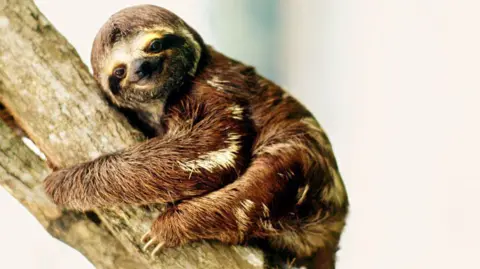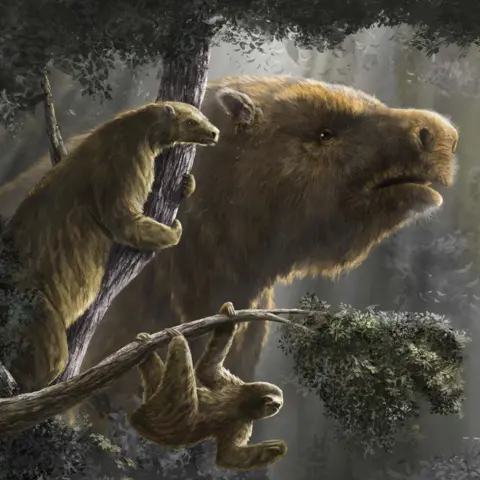ARTICLE AD BOX
Helen Briggs
BBC environment correspondent•@hbriggs

 Getty Images
Getty Images
Only tree-living sloths are found on the planet today, but the group was once much more diverse
Sloths have a reputation for being sluggish and slow, spending most of their lives dozing in trees, but a new study suggests this is one of the enduring secrets of their success.
Scientists have examined the evolutionary history of the animals, including extinct forms known only from the fossil records.
They say giant sloths walking the land were an easy target for the first human hunters.
In contrast, small sloths in the trees managed to cling on to survival.

 Alberto Boscaini
Alberto Boscaini
The skeleton of Megatherium americanum, an extinct species of giant ground sloth, in Museo Argentino de Ciencias Naturales in Buenos Aires, Argentina
The researchers say it is a reminder of the need to conserve Earth's remaining sloths, which represent only the tip of the iceberg of 30 million years of evolutionary history.
"Some sloths are here with us today, some of them are at risk of extinction and one take home message is that we need to act now to avoid a total extinction of the group, said Dr Alberto Boscaini of the University of Buenos Aires, who led the study.
Today, sloths are small, tree-dwelling mammals, known for their cute faces and unhurried demeanour, found only in the rainforests of South and Central America.
However, back in the ancient past there were hundreds of different sloths across the Americas, of all shapes and sizes, adapted to live in every environment. Sloths lived on the ground, in caves and tunnels underground and even in water, some growing as big as elephants and standing taller than a man.

 Getty Images
Getty Images
A three-toed sloth clings to the branches of a tree
But around 15,000 years ago, sloths started to die out. Scientists have been split over their demise, with various factors blamed, such as human hunting, environmental factors such as changes in the climate, or a combination of both.
In the new study, researchers analysed the body size of sloths across their evolutionary family tree and combined this with genetic data.
They found sloths adjusted their body size many times to cope with changes in the climate, without any long-term effects. Their "abrupt and precipitous decline" coincided with the time humans were spreading across the Americas hunting large mammals for food.
Larger ground-dwelling sloths would have been a relatively easy target, and it was these that started to vanish, the scientists say.

 Diego Barletta
Diego Barletta
Sloths came in different shapes and sizes - small sloths living entirely in trees, giant sloths on the ground and some that lived both on land and in trees
In contrast, smaller sloths living in trees went largely unnoticed and have survived to this day.
"Living sloths are extremely slow and that's because they have a very low metabolic rate. This is their strategy to survive," said Dr Boscaini.
Co-researcher, Dr Daniel Casali, of The University of São Paulo, Brazil, added: " We can conserve the ones that are alive but unfortunately we lost something that is not possible to replace."
The research is published in the journal, Science.

 5 hours ago
3
5 hours ago
3








 English (US) ·
English (US) ·